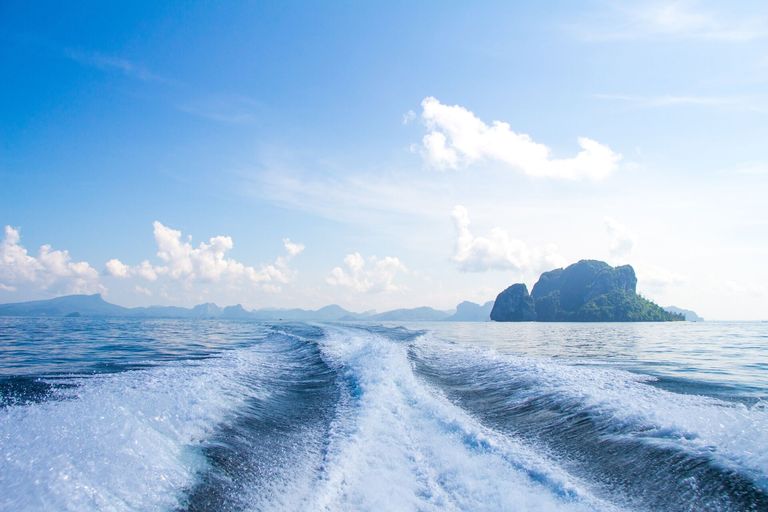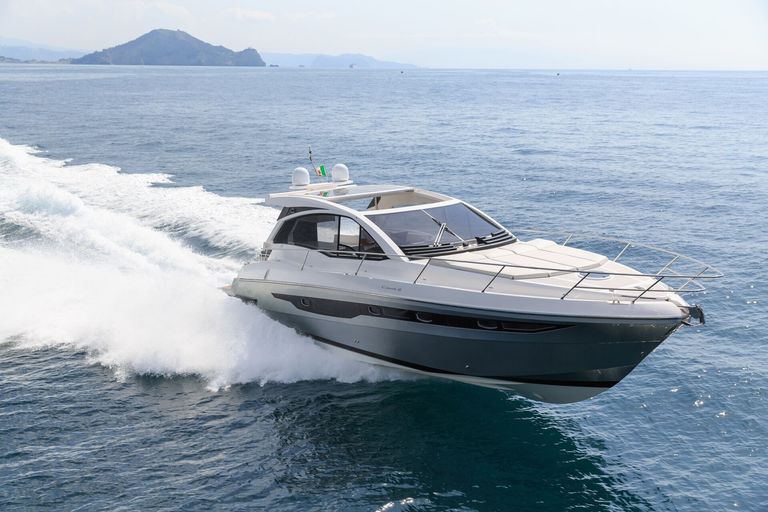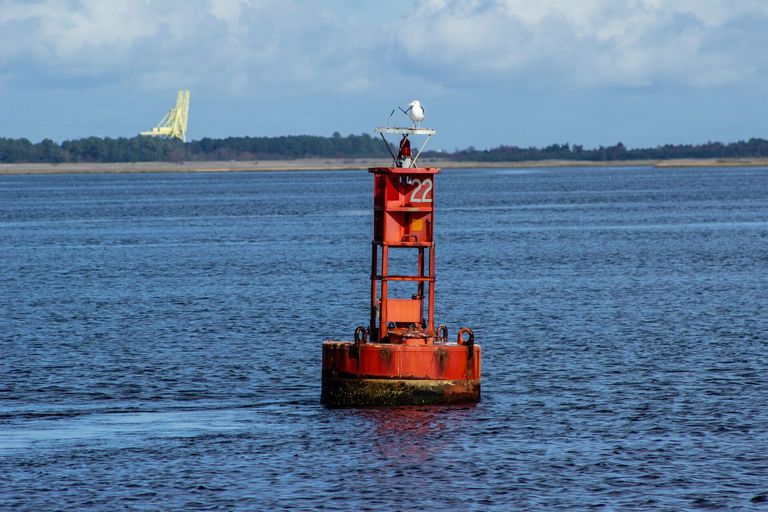What Are the Types of Fire Extinguishers for Boats?
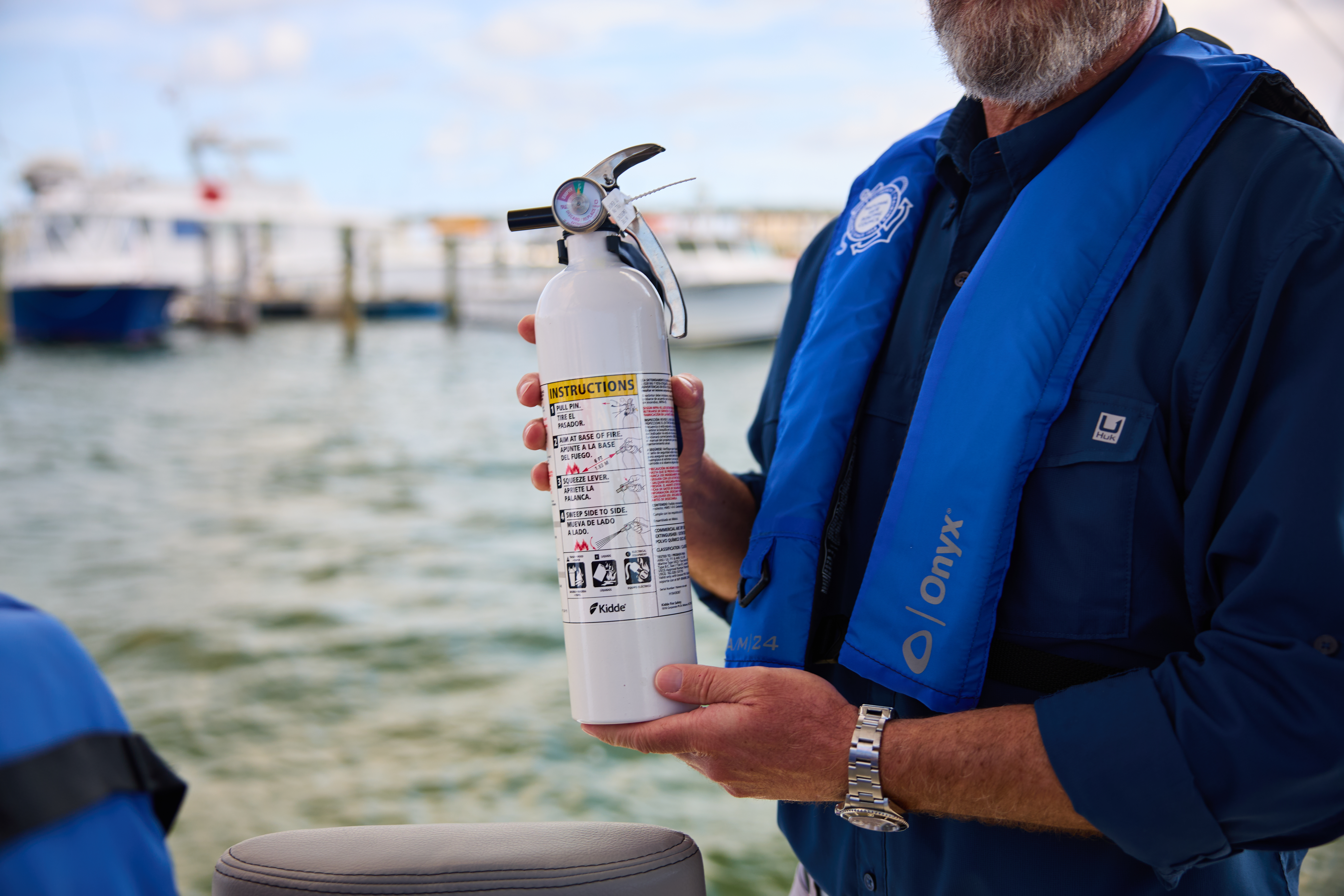
Boating is a lot of fun, but you also want to ensure you're prepared for emergencies, including fires. A fire onboard a boat can escalate quickly, posing significant risk due to the confined space. You have limited escape routes on a boat that catches fire, especially if you're in deep water or far from shore.
So, it's essential to understand the types of fire extinguishers typically used on a boat and ensure you have the right one on board as an essential part of your safety equipment. You also need to check it periodically and maintain it correctly, including replacing it when it expires. You want to be sure it will work properly if you ever need it.
What are the types of fire extinguishers boaters need to consider when preparing safety equipment? Keep reading to learn all about them!
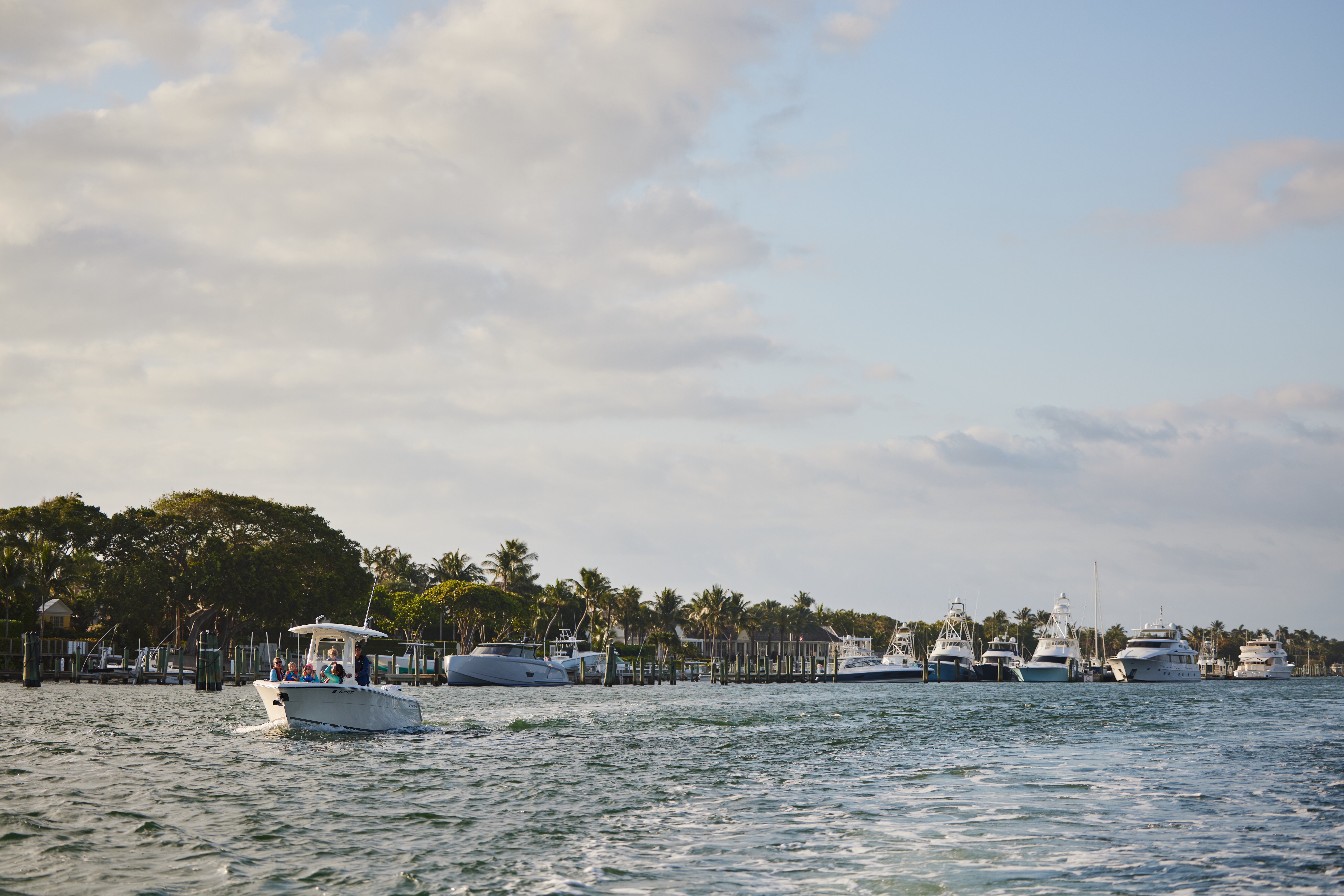
The Different Types of Boat Fires
First, let's talk about the types of fires you could encounter while boating.
There are three classes of fires typically encountered on boats. While many people think a fire is a fire and they're all the same, that's really not the case. Instead, boaters should be aware of the fire's cause and the type of items that are burning so they can put the fire out as effectively (and as quickly) as possible.
The three main types of fires you can encounter on a boat are:
- Class A: Combustible materials like wood and paper
- Class B: Flammable liquids such as oil and gas.
- Class C: Electrical equipment
Each class of fire requires a specific type of extinguisher to suppress it efficiently. Understanding the different classes of fires is crucial to ensure that you're picking the right extinguisher for your needs. If you encounter a boating fire and don't have the right extinguisher, it could take a lot longer to put the fire out, and it might not go out at all – leading to a more dangerous emergency on the water.
The Types of Fire Extinguishers You Need for Your Boat
How can you know which fire extinguisher to carry on your boat? To start, the size of your boat determines the fire extinguishers you need under maritime regulations. Legal requirements must be met for the types and numbers of extinguishers you carry to ensure that you're operating safely and in compliance.
Boats Less Than 26 Feet

If you operate a boat less than 26 feet in total length, you must have one 5-B extinguisher on board. While you are not required to have additional extinguishers, you can carry them if you choose to.
What does "5-B" mean? The number before the "B" indicates the square footage of the fire that the extinguisher can put out. So, a 5-B extinguisher can handle a fire covering five square feet, which is appropriate for smaller boats.
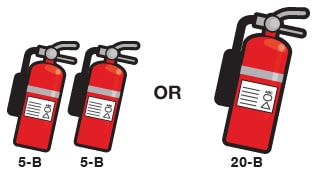
26- to 40-Foot Boats
Two 5-B extinguishers are required on boats measuring between 26 and 40 feet. If you don't want to carry these, you can carry one 20-B extinguisher instead.
The 20-B extinguisher can put out a fire covering more square footage than a 5-B.
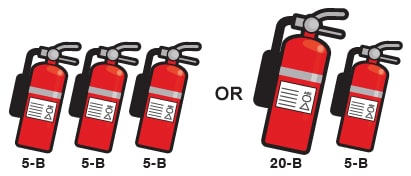
Watercraft 40 Feet to Less Than 65 Feet
For a boat of this size, you'll need three 5-B extinguishers, or you can carry one 5-B extinguisher and one 20-B
extinguisher if that's more convenient for placement and storage.
Vessels Greater Than 65 Feet
Any vessel greater than 65 feet must meet federal requirements for fire extinguishers, which can vary depending on several factors. If you have a large boat, take the time to understand your fire suppression options and carry the appropriate extinguishers for your needs.
Where Should You Place Fire Extinguishers?
Fire extinguishers don't matter much if you can't reach them when a fire breaks out. That's why you want to strategically place your extinguishers strategically in easy-to-access locations.
Consider your boat's size and layout, and look at maritime guidelines for placement. Then, you can make a wise, safe decision about the best places to store your extinguishers.
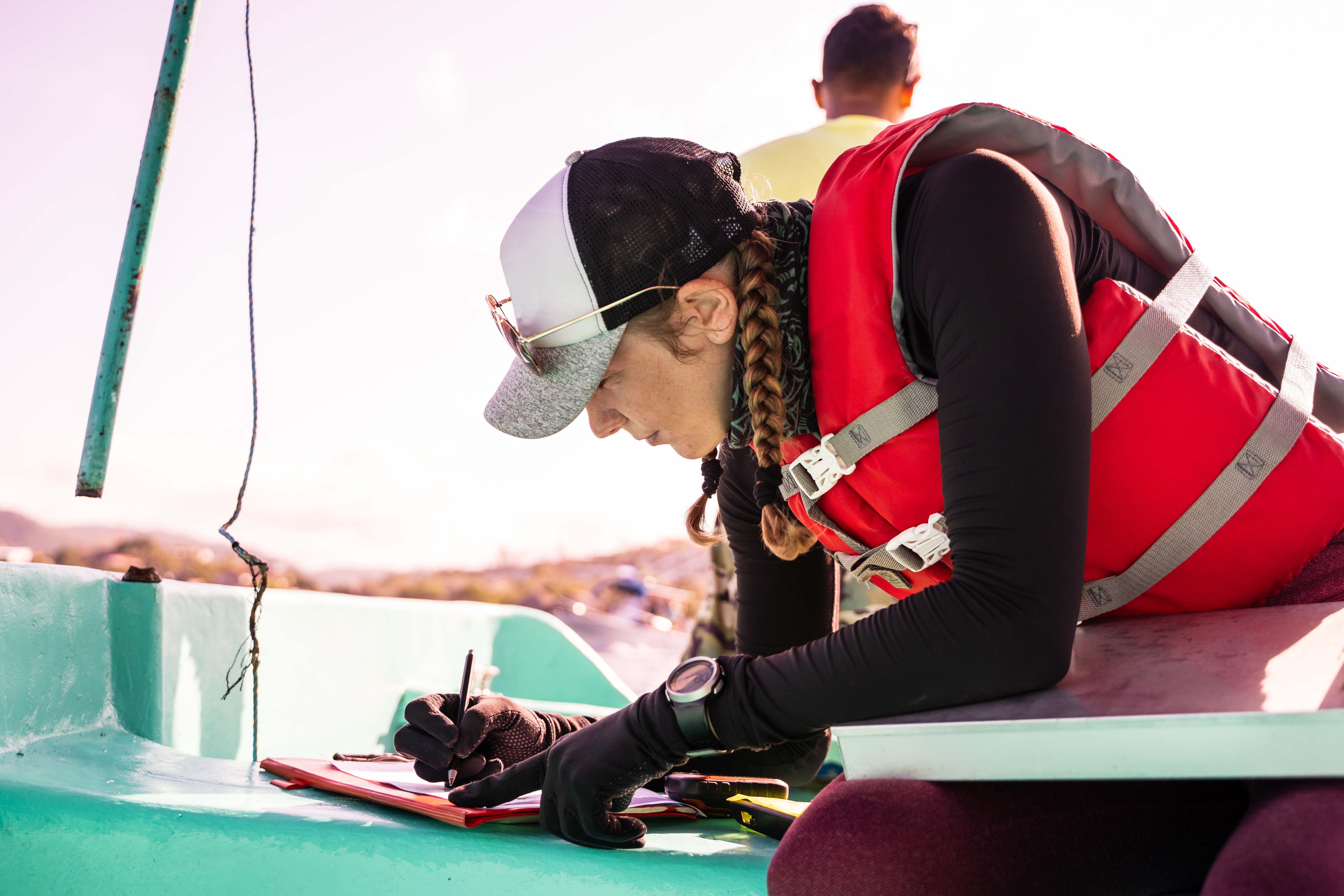
Don't Forget Maintenance and Inspections
Regular maintenance and inspections are vital to ensure that your extinguishers work properly. You should inspect them for leakage, damage, and corrosion and follow the manufacturer's recommendations for recharging and replacement intervals. That will help you have confidence that your extinguisher will work if needed.
Naturally, you hope never to need to use a fire extinguisher while on your boat. You could enjoy the waterways for years and never have a problem. However, like boating insurance and other safety measures, extinguishers are essential to protecting yourself, your property, and others while you're on the water.
Be Prepared to Use It
While it's great to have the number and types of fire extinguishers you need, they aren't effective if you and your passengers or crew don't know how to use them.
Conducting regular drills can help everyone on board know what to do so you can boat with confidence. If you take a safety course from BOATERexam, you'll learn how to use a fire extinguisher to protect yourself and your boat in an emergency.
Choose the Right Types of Fire Extinguishers and Get Certified
Before you get out on the water with your beautiful boat, choose the correct fire extinguishers and take the time to go through a boating safety course to get safety certified. Not only will a U.S. state-approved or Canada-approved course teach you about extinguishing fires on your boat, but you'll also learn a lot of important information that can make your time on the water more enjoyable.
BOATERexam offers online courses for boaters in the U.S. and Canada. Our courses meet all requirements for state and Canada boating safety certifications, plus they're engaging and convenient!
So, before hitting the water, find the course for your state in the U.S. or choose the Canada-approved course and get certified.

